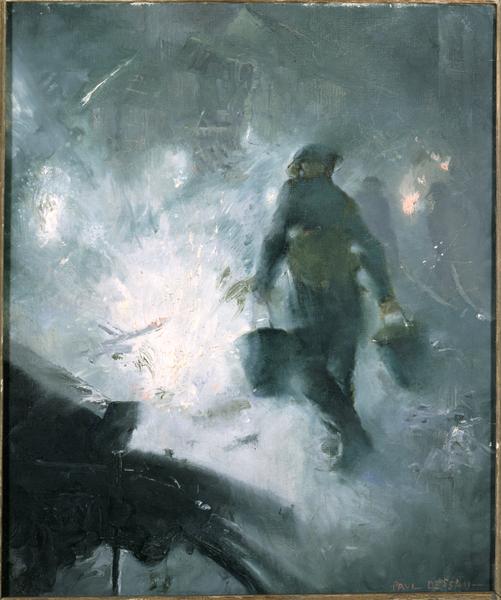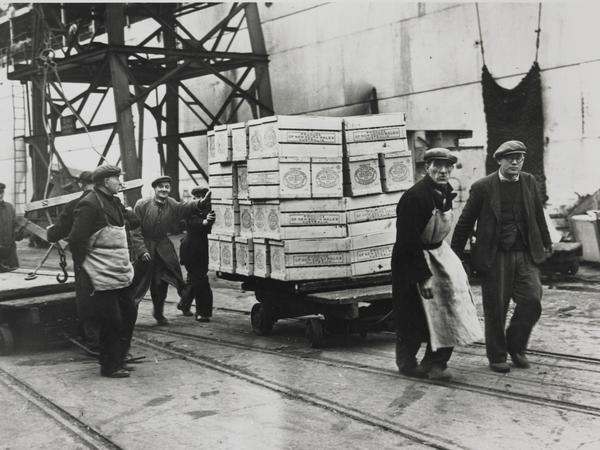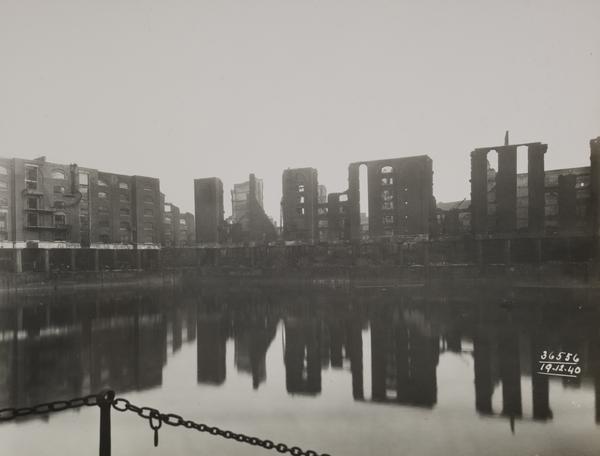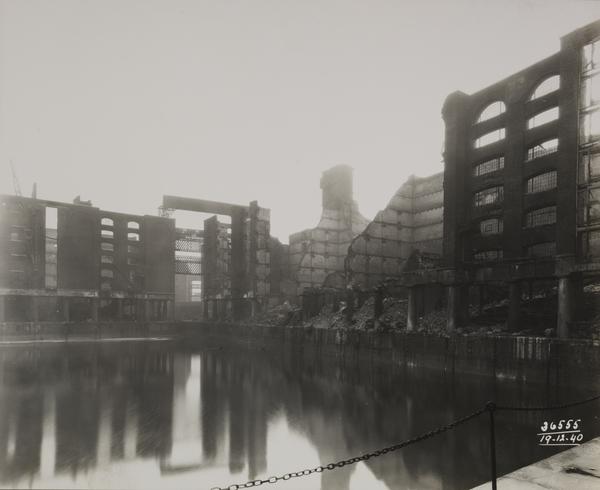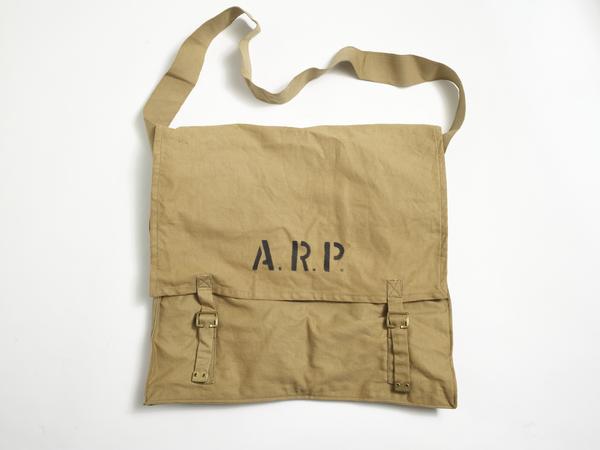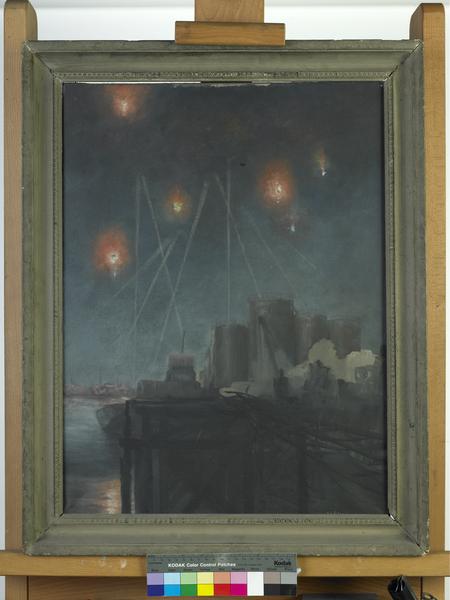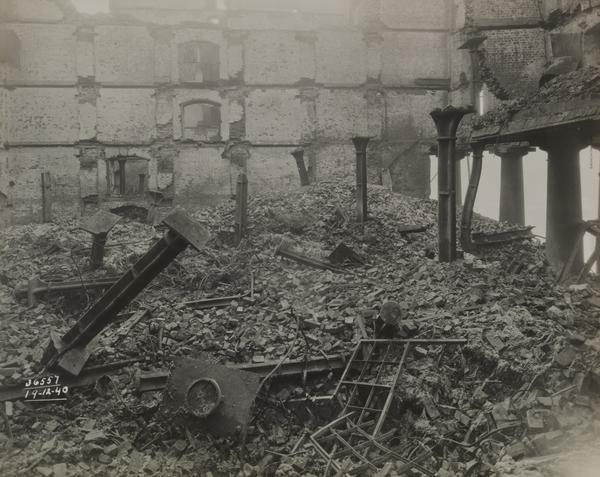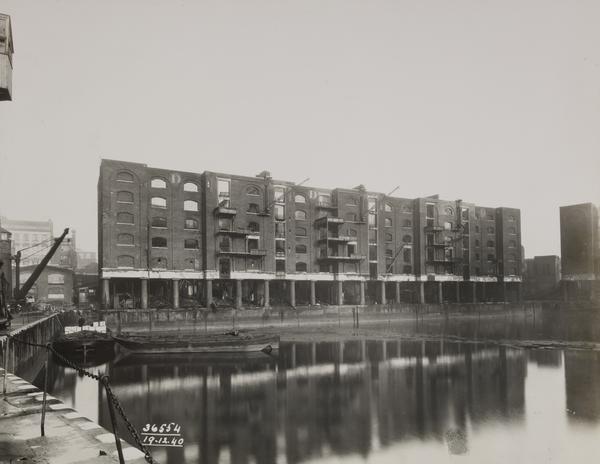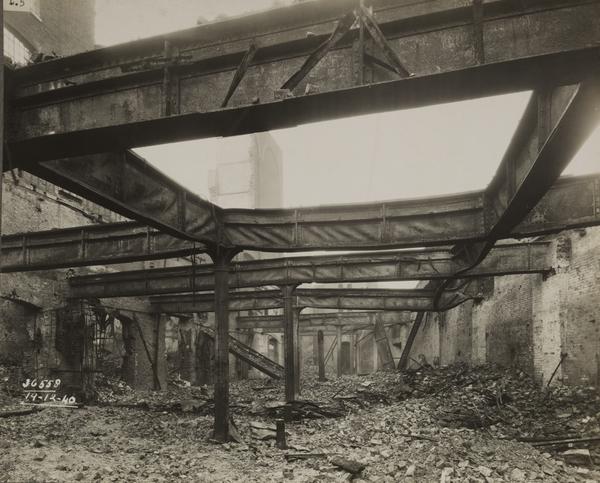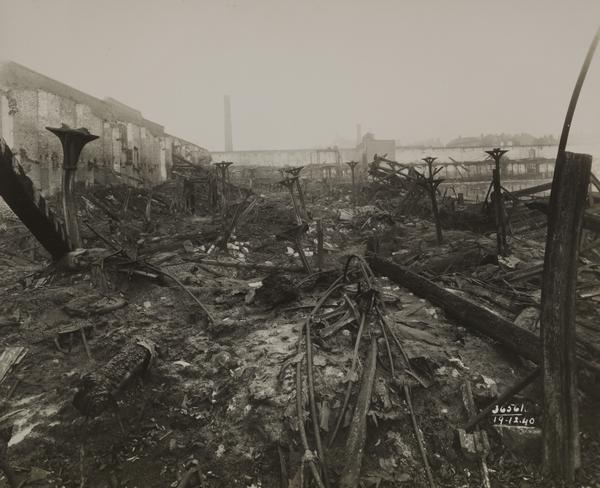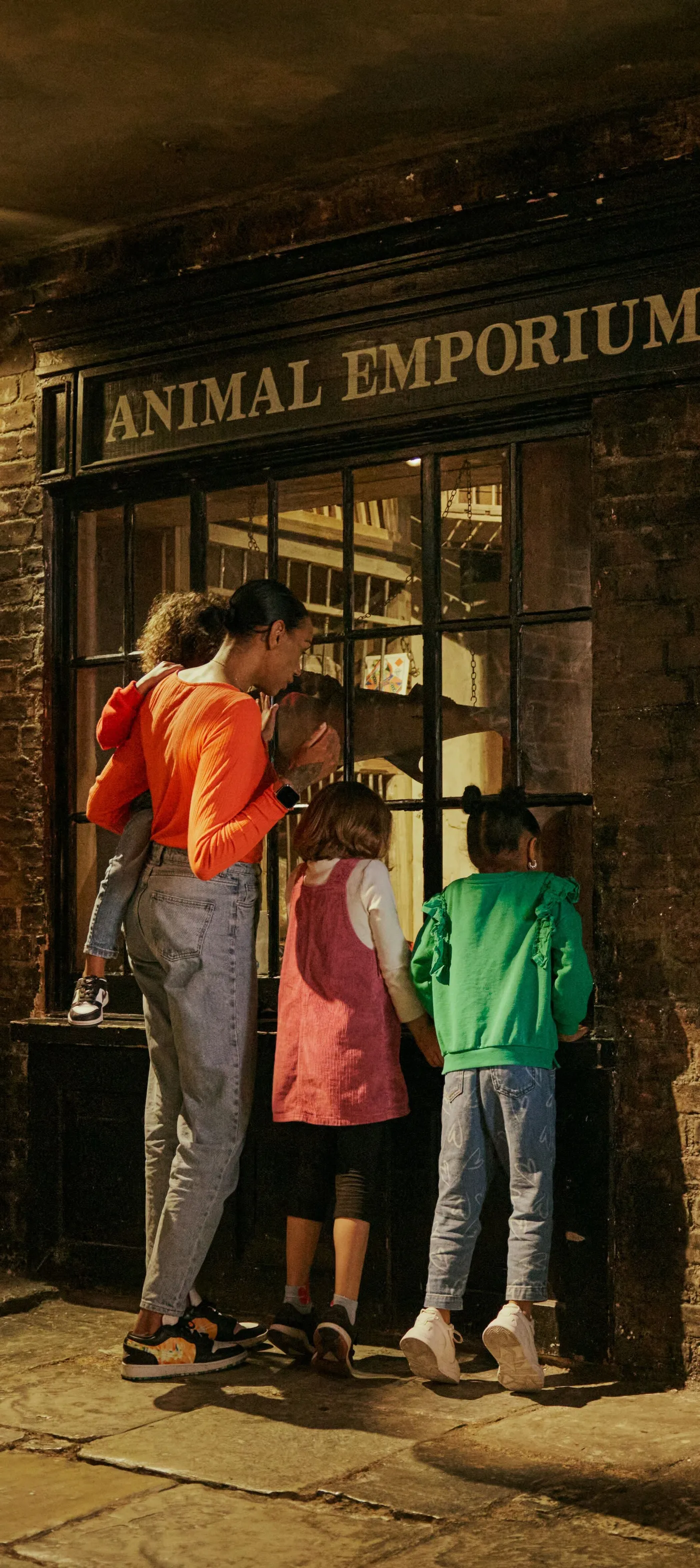Black Saturday: The first day of the Blitz
The first mass bombing raid on London of the Second World War came on 7 September 1940. Hundreds of German planes dropped bombs on the docks in east and south London, killing 430 Londoners. There was carnage, fear and spirited resistance. The Blitz had begun.
Docklands, east London
7 September 1940
The first dark day of London’s darkest chapter
London had been expecting an attack since 1939, when the Second World War began. After false alarms and busy preparation, it finally arrived on 7 September 1940.
German planes released their bombs over London’s docks in east and south London. The German plan was to prevent the import and supply of essential food and goods, weakening the UK’s ability to fight and puncturing the nation’s morale.
But the bombs hit homes in the process. The attack killed 430 people and injured 1,600. It was labelled ‘Black Saturday’ by the press.
Unfortunately, things would get darker still. The raids continued for 57 consecutive nights, testing Londoners as they’ve never been tested before or since.
This was only the start of the Blitz – a bombing campaign which spread across Britain, lasting until May 1941. Then, from 1944, V1 and V2 rockets arrived to terrorise Londoners yet again.
What happened on Black Saturday?
The attack began in daylight. At 4.43pm on Sunday 7 September, air raid sirens in London began to wail. Soon after, the first in a wave of 400 German Heinkel and Dornier bombers reached the city.
The German air force targeted London’s docks with imprecise saturation bombing. They dropped a mixture of high-explosive bombs, which shattered buildings, and incendiary bombs, which started destructive fires.
Around 6.30pm, the ‘all clear’ siren sounded. The bombing paused for a short while.
At 8pm, a second wave of more than 300 planes began their attack. This time they carried 300 tonnes of high-explosive bombs and landmines. The sky was now dark, but the fires started by the first wave were still burning, leading the bombers to their targets.
The bombing didn’t stop until 4.30am – over eight hours after the second wave began its attack.
“all the night through you could hear thud, thud, thud, thud and the whistles as the bombs were falling”
Stan Harris
What was the damage?
The raid started enormous fires which were visible for miles around. On the north bank of the River Thames, the blazes were fuelled by stores of flour, paint, rubber and sugar. Some firefighting crews were slowed down by melted grain, which stuck to their boots.
“None who saw that blaze” said The Times newspaper’s report, “will ever forget it.”
The Germans were targeting the docks – the wharves, factories, engineering workshops, shipyards and warehouses. But planes didn’t have the technology to bomb precisely.
The docks in east and south London were surrounded by homes, and local people paid the price. Homes, businesses, schools and churches were destroyed. Tram lines, water and gas pipes, and electricity and telephone cables lines were all damaged. Many people were trapped and died in the rubble.
How did people react to the raid?
This first experience of bombing was terrifying for Londoners. Stan Harris, 22 at the time, remembered: “The sky was black with the German bombers and fighters… we was frightened to go out in the garden in the shelter. And we all went under the stairs, so we never had a dog’s chance if anything happened. And all the night through you could hear thud, thud, thud, thud and the whistles as the bombs were falling.”
The Times’ report describes “a sea of shattered small houses” and “pathetic groups of the homeless, trudging along with bundles of what household possessions they had been able to salve from wrecked homes”.
The paper also has the first mentions of something like the mythical, defiant ‘Blitz spirit’. It reported on speedy repairs and weddings taking place as planned among the rubble – “East London was not cowering.”
But the fear was clear. In the raids that followed, people headed to London underground stations for shelter in spite of government guidance not to. Some forced their way inside, or bought tickets and refused to leave.
Many people didn’t have gardens to build their own shelter, and there weren’t enough public surface shelters, which many thought were unsafe anyway. Before the end of the year, the authorities relented and parts of the underground were turned into official shelters.
Who tackled the fires?
Preparations for air raids had started before war broke out. In addition to the London Fire Brigade, an Auxiliary Fire Service (AFS) of volunteers was established in January 1938. It had 200,000 volunteers nationwide by 1939.
The AFS used modified taxis to pull the pumps for their firehoses. Fire guards, organised into ‘street parties’, were tasked with putting out small fires with stirrup hand pumps.
For some of those working on Black Saturday, it was their first time fighting a real fire. It was a gruelling assignment. During the Blitz, firefighters sometimes worked for 40 hours straight.
On Black Saturday, firefighters came from Bristol, Birmingham and all over London to tackle the vast blazes in the Docklands. The firefighters of the Second World War became known as the ‘heroes with grimy faces’.
Women weren’t allowed to fight fires themselves, but signed up to manage communications, watch out for fires and drive vehicles.
Firefighting was just one part of the enormous efforts on the home front. Londoners took on a variety of new roles crucial to civil defence, sometimes keeping up a regular job at the same time.
They trained as air raid wardens, fire watchers and auxiliary nurses, or joined the Home Guard, a last defensive line of volunteers in case of invasion. On Black Saturday, the people who’d filled these roles dealt with the realities of an air raid for the first time.
How was London defended against the attack?
The Times reported that “The enemy paid dearly for the success they obtained.” The paper quotes official sources saying that 99 planes were shot down.
London was defended by RAF fighter planes engaged in the duel for control of the skies, known as the Battle of Britain. Anti-aircraft guns fired from the ground. At night, spotlights illuminated their targets.
Why did the Luftwaffe target the docks?
London’s port handled over a quarter of Britain’s imports. The riverfront and the nearby areas were full of important industrial sites.
The Germans believed that, if the port could be disrupted or destroyed, London would be weaker and Britain would have to submit.
London’s port became Germany’s ‘Target Area A’. This area included the Royal, West India, Millwall, Surrey Commercial and St Katharine Docks.
It also covered Beckton gasworks, the munitions factories at Woolwich Arsenal and the Ford factory at Dagenham, which produced almost 350,000 army lorries, RAF tractors and troop carriers during the war.
Bombs were dropped across the city in the following years as the Blitz continued – but the docks remained a prime target.










